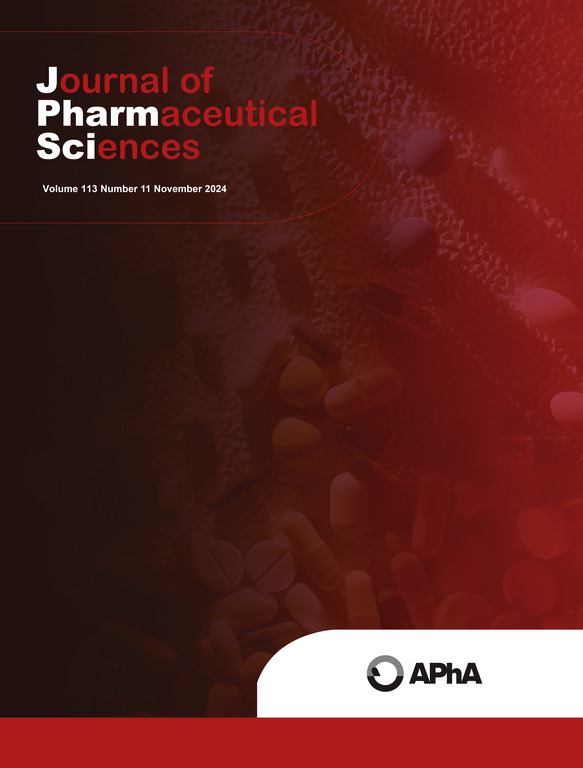基于轨道rap质谱法的糖肽中n-亚硝胺类原料药相关杂质的原位形成与评价
IF 3.7
3区 医学
Q2 CHEMISTRY, MEDICINAL
引用次数: 0
摘要
亚硝胺是一类n -亚硝基化合物,由于其确定的致癌性,引起了重大的健康问题。ICH M7将n -亚硝基化合物列入所谓的关注队列,因为它们具有致癌作用。糖肽是由肽段和聚糖段组成的复杂分子。全科医生是减轻细菌感染,特别是革兰氏阳性细菌感染的最后手段。全科药物由于其核心结构中存在仲胺,容易受到亚硝胺类原料药相关杂质(NDSRI)的污染。GPs中NDSRI杂质的形成既可能发生在半合成过程中,也可能发生在储存过程中。然而,到目前为止,还没有关于全科医生NDSRI发生的研究报道,这是一个先决条件。因此,本研究探讨了GPs患者NDSRI的可能机制和检测方法。进行了原位研究,以评估GPs中NDSRI的可能形成。本研究对不同代的gp进行了筛选,以确定其形成含亚硝化剂的NDSRI杂质的潜力。采用LC和LC- hrms /MS对原位生成的杂质进行鉴定。有趣的是,NDSRIs的形成在所有选定的gp中都很明显。阐明了单个gp和各自NDSRIs的分子机制和途径。有趣的是,在原位生成的样品中也发现了异构体NDSRIs。使用CPCA对NDSRIs的效价评分和可接受摄入量进行评估。因此,本研究旨在通过提高对全科医生NDSRIs的理解,提高全科医生的安全性和有效性,确保符合监管标准。本文章由计算机程序翻译,如有差异,请以英文原文为准。

In-situ formation and evaluation of N-nitrosamine drug substance related impurities in glycopeptides implying orbitrap mass spectrometry
Nitrosamines, a class of N-nitroso compounds, have raised significant health concerns due to their established carcinogenicity. ICH M7 enlisted N-nitroso compounds in the so called cohorts of concern due to their carcinogenic effects. Glycopeptides (GPs) are complex molecules composed of peptide and glycan moieties. GPs serve as the last resort for the mitigation of bacterial infections, particularly against gram-positive bacteria. GPs are susceptible to nitrosamine drug substance related impurities (NDSRIs) contamination due to the presence of secondary amine in their core structure. The incidence of formation of NDSRI impurities in GPs could be either during their semi-synthetic route or storage. However, till date, no studies have been reported on the occurrence of NDSRI in GPs which is a pre-requisite. Hence, the current study investigates the plausible mechanisms and detection methods for the NDSRI in GPs. In-situ studies were performed to evaluate the possible formation of NDSRI in GPs. In the current study, GPs of different generations were screened for their potential of forming NDSRI impurities implying nitrosating agent. LC and LC![]() HRMS/MS studies were performed to identify the in-situ generated impurities. Interestingly, the formation of NDSRIs is evident in all the selected GPs. The molecular mechanisms and pathways for individual GPs and respective NDSRIs were elucidated. Interestingly, isomeric NDSRIs were also identified during in-situ generated samples. Using CPCA the potency scores and acceptable intakes for the NDSRIs were evaluated. Thus, this work aims to enhance the safety and efficacy of GPs ensuring compliance with the regulatory standards by advancing the understanding of NDSRIs in GPs.
HRMS/MS studies were performed to identify the in-situ generated impurities. Interestingly, the formation of NDSRIs is evident in all the selected GPs. The molecular mechanisms and pathways for individual GPs and respective NDSRIs were elucidated. Interestingly, isomeric NDSRIs were also identified during in-situ generated samples. Using CPCA the potency scores and acceptable intakes for the NDSRIs were evaluated. Thus, this work aims to enhance the safety and efficacy of GPs ensuring compliance with the regulatory standards by advancing the understanding of NDSRIs in GPs.
求助全文
通过发布文献求助,成功后即可免费获取论文全文。
去求助
来源期刊
CiteScore
7.30
自引率
13.20%
发文量
367
审稿时长
33 days
期刊介绍:
The Journal of Pharmaceutical Sciences will publish original research papers, original research notes, invited topical reviews (including Minireviews), and editorial commentary and news. The area of focus shall be concepts in basic pharmaceutical science and such topics as chemical processing of pharmaceuticals, including crystallization, lyophilization, chemical stability of drugs, pharmacokinetics, biopharmaceutics, pharmacodynamics, pro-drug developments, metabolic disposition of bioactive agents, dosage form design, protein-peptide chemistry and biotechnology specifically as these relate to pharmaceutical technology, and targeted drug delivery.

 求助内容:
求助内容: 应助结果提醒方式:
应助结果提醒方式:


